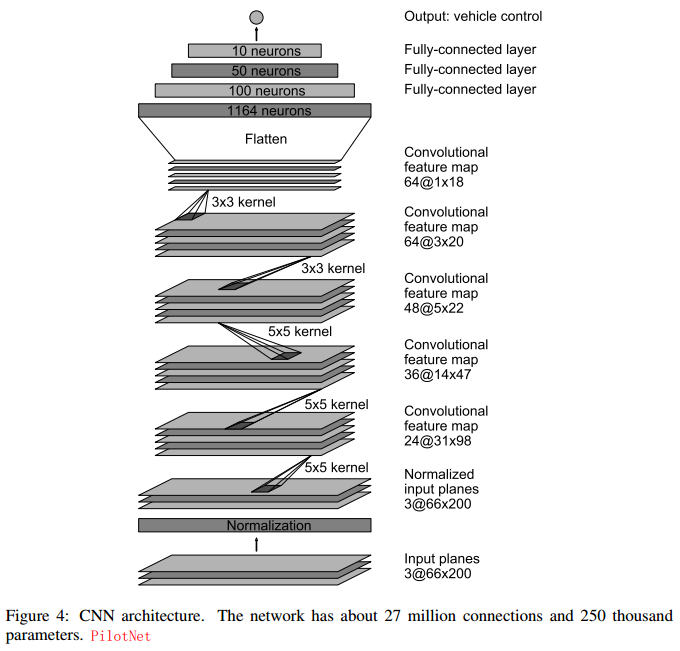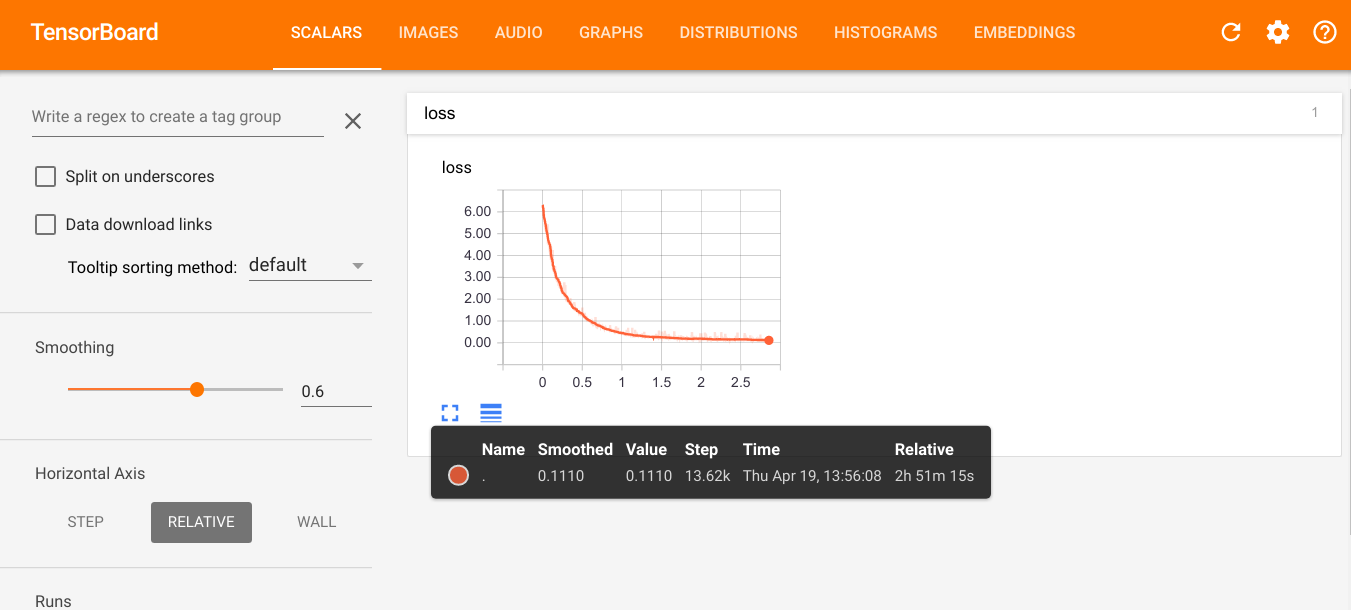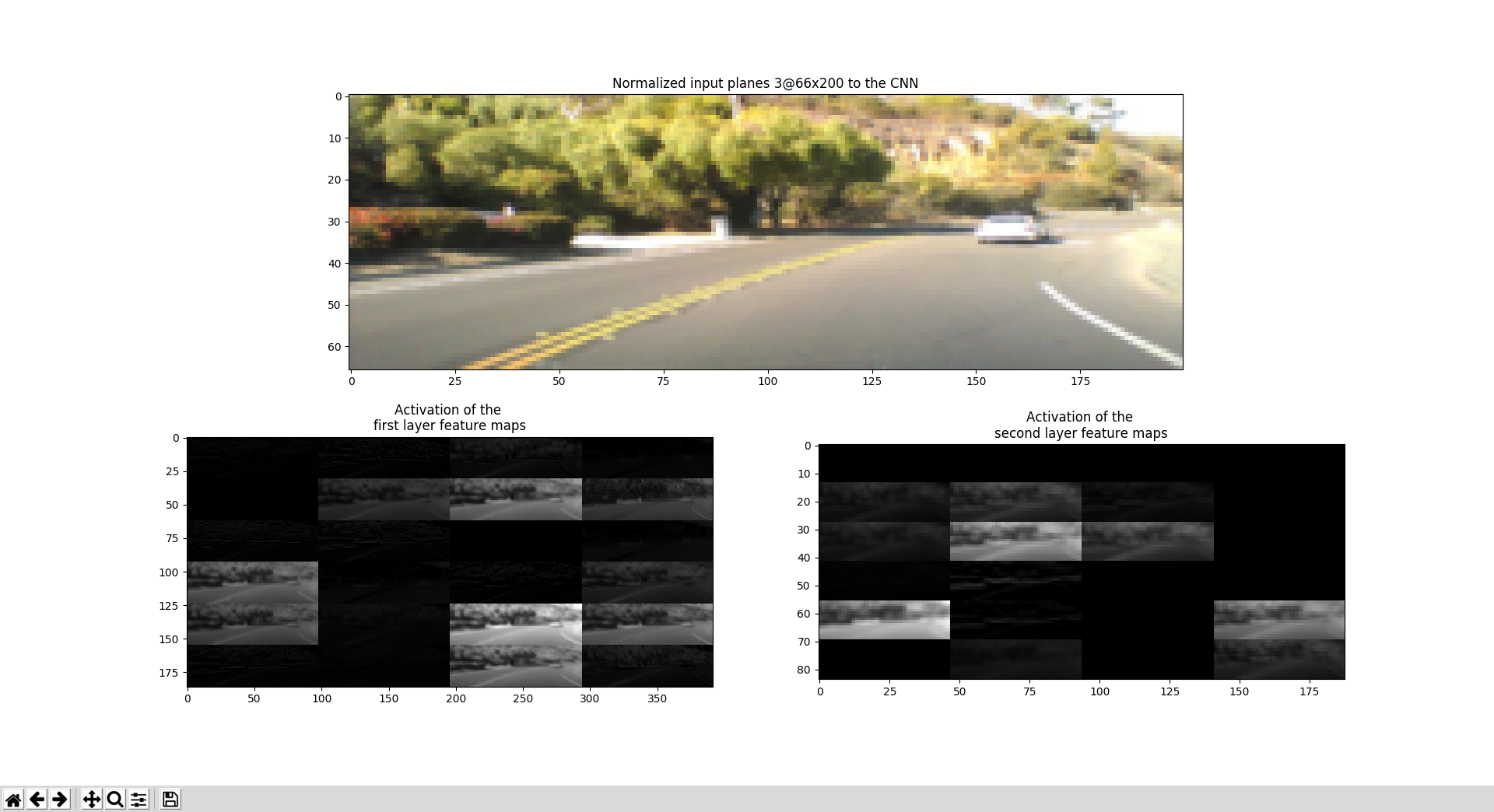A TensorFlow implementation of this Nvidia's End to End Learning for Self-Driving Cars with some changes. And implement Explaining How a Deep Neural Network Trained with End-to-End Learning Steers a Car.
@article{bojarski2016end,
title={End to end learning for self-driving cars},
author={Bojarski, Mariusz and Del Testa, Davide and Dworakowski, Daniel and Firner, Bernhard and Flepp, Beat and Goyal, Prasoon and Jackel, Lawrence D and Monfort, Mathew and Muller, Urs and Zhang, Jiakai and others},
journal={arXiv preprint arXiv:1604.07316},
year={2016}
}
@article{bojarski2017explaining,
title={Explaining how a deep neural network trained with end-to-end learning steers a car},
author={Bojarski, Mariusz and Yeres, Philip and Choromanska, Anna and Choromanski, Krzysztof and Firner, Bernhard and Jackel, Lawrence and Muller, Urs},
journal={arXiv preprint arXiv:1704.07911},
year={2017}
}The instructions are tested on Ubuntu 16.04 with python 2.7 and tensorflow 1.0 with GPU support (CUDA 8.0 and cuDNN 5.1).
-
Clone the PilotNet repository:
$ git clone https://github.com/Durant35/PilotNet.git
We name the root directory as
$ROOT. -
Setup virtual environment using
virtualenvwrapper.$ pip install virtualenvwrapper # configure virtualenvwrapper $ mkdir $HOME/.local/virtualenvs # append contents in `~/.bashrc` $ sudo vim ~/.bashrc # always use pip/distribute export VIRTUALENV_USE_DISTRIBUTE=1 # directory to store all virtual environment export WORKON_HOME=$HOME/.local/virtualenvs if [ -e $HOME/.local/bin/virtualenvwrapper.sh ]; then source $HOME/.local/bin/virtualenvwrapper.sh else if [ -e /usr/local/bin/virtualenvwrapper.sh ]; then source /usr/local/bin/virtualenvwrapper.sh fi export PIP_VIRTUALENV_BASE=$WORKON_HOME export PIP_RESPECT_VIRTUALENV=true # enable virtualenvwrapper $ source ~/.bashrc # create virtual environment with python2.7 and tensorflow 1.0.0 $ mkvirtualenv -p /usr/bin/python2.7 python1.0.0
-
Use pip to install required Python packages:
$ cd $ROOT $ workon python1.0.0 (python1.0.0) $ pip install -r requirements.txt
If you want to run the demo on the dataset or try some training works, download the
driving_dataset.zip and recommend you to
extract into the dataset folder ./data/dataset_nvidia/.
$ cd $ROOT/data/dataset_nvidia/
$ wget -t https://drive.google.com/file/d/0B-KJCaaF7elleG1RbzVPZWV4Tlk/view?usp=sharing
$ unzip driving_dataset.zip -d . This driving_dataset.zip consists of
images of the road ahead (*.jpg) and recorded steering wheel angles (%.6f), data.txt should in following
format:
...
98.jpg 2.120000
99.jpg 2.120000
100.jpg 2.120000
101.jpg 2.120000
...You can run this demo directly on a live webcam feed in actual running scenario (online) or just offline, given input images of the road ahead.
- Run the model on the dataset.
$ cd $ROOT $ workon python1.0.0 (python1.0.0) $ ./scripts/demo.sh -h Usage: ./scripts/demo.sh [options] options: -h, --help show brief help -model_file model files for restoring PilotNet, default './data/model_nvidia/model.ckpt' -online run the demo on a live webcam feed, default demo on dataset -dataset_dir dataset given input images of the road ahead, default './data/dataset_nvidia' (python1.0.0) $ ./scripts/demo.sh
- Run the model on a live webcam feed
$ cd $ROOT $ workon python1.0.0 (python1.0.0) $ ./scripts/demo.sh -online
- After downloading the dataset, you can train your own model parameters as following:
$ cd $ROOT $ workon python1.0.0 (python1.0.0) $ ./scripts/train.sh -h Usage: ./scripts/train.sh [options] options: -h, --help show brief help -dataset_dir training dataset given input images of the road ahead and recorded steering wheel angles, default './data/datasets/driving_dataset' -f force to clear old logs if exist -log_dir path for training logs, including training summaries as well as model parameters, default in './logs' and './logs/checkpoint' respectively -num_epochs the numbers of epochs for training, default train over the dataset about 30 times. -batch_size the numbers of training examples present in a single batch for every training, default 128 (python1.0.0) $ ./scripts/train.sh
- You can run
./scripts/train.shto train your model from downloaded dataset following tips above. Training logs and model will be stored into ./logs and ./logs/checkpoint respectively. -dataset_dircan help you to specify other available dataset.- You can use
-log_dirto set another log directory, and be careful to use-ffor log files synchronization, fixWARNING:tensorflow:Found more than one metagraph event per run. Overwriting the metagraph with the newest event. - You can use
-num_epochsand-batch_sizeto control the training step if good at it.
- You can run
- Use Tensorboard to visualize training, then open http://127.0.1.1:6006 in your web browser,
following figure shows the step-by-step training of given model in ./data/models/model.ckpt as well as
log files in ./logs.
$ cd $ROOT $ workon python1.0.0 (python1.0.0) $ tensorboard --logdir=./logs I tensorflow/stream_executor/dso_loader.cc:135] successfully opened CUDA library libcublas.so.8.0 locally I tensorflow/stream_executor/dso_loader.cc:135] successfully opened CUDA library libcudnn.so.5 locally I tensorflow/stream_executor/dso_loader.cc:135] successfully opened CUDA library libcufft.so.8.0 locally I tensorflow/stream_executor/dso_loader.cc:135] successfully opened CUDA library libcuda.so.1 locally I tensorflow/stream_executor/dso_loader.cc:135] successfully opened CUDA library libcurand.so.8.0 locally Starting TensorBoard 41 on port 6006 (You can navigate to http://127.0.1.1:6006)
This demonstrates that the CNN learned to detect useful road features on its own, i.e., with only the human steering angle as training signal.
Show the activations of the first two feature map layers as following:
$ cd $ROOT
$ workon python1.0.0
(python1.0.0) $ python src/show_activation.py


